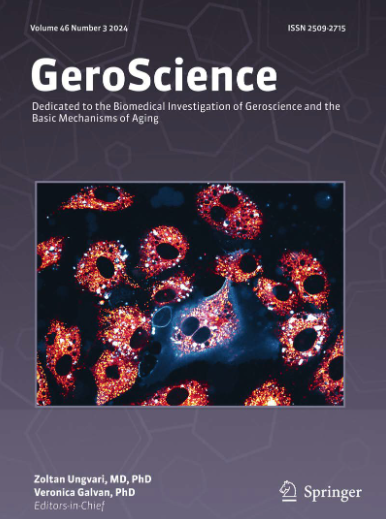简短的沟通和明确的老年建议内容很重要!年龄≥85岁的心脏病住院患者接受老年推荐的评价
IF 5.4
2区 医学
Q1 GERIATRICS & GERONTOLOGY
引用次数: 0
摘要
随着心血管疾病患者年龄的增长,对心血管老年护理的需求也在增长。因此,我们的目的是通过分析老年建议的内容和接受率来确定实施心血管老年护理的促进因素和障碍。本回顾性队列研究纳入100例年龄在100 ~ 85岁之间接受老年会诊并入住心内科的患者。随机抽样,其中一半接受主动老年咨询,一半接受常规护理(根据要求进行老年咨询)。推荐内容被分为老年领域(身体、精神、功能、社会和存在),推荐被分为七个类别(例如,接受,患者拒绝)。此外,使用单变量逻辑回归分析了与接受率相关的因素。研究人群(平均年龄88岁,60%为女性)收到310条建议,其中56%被接受。与物理领域相比,如果推荐属于功能领域(OR 3.10 (95% CI 1.41-6.82))、社会领域(OR 5.55 (95% CI 2.40-13.00))和存在领域(OR 6.09 (95% CI 2.62-14.16)),接受率明显更高。此外,如果建议是口头而不是电子沟通(OR 2.16 (95% CI 1.30-6.70)),当使用清晰的语气而不是可疑的语气(OR 1.90 (95% CI 1.01-3.56)),并且如果建议是简明的文档(OR 1.11 (95% CI 1.04-1.20)平均减少10个单词),则观察到更高的接受率。在本研究中,老年心脏病患者的老年推荐接受率较低。关于功能、社会和存在领域的建议有最高的接受率。为了提高接受率,建议应该口头沟通,简洁地记录,并且应该避免怀疑的语气。本文章由计算机程序翻译,如有差异,请以英文原文为准。
Short communication and clear content of geriatric recommendations matter! Evaluation of geriatric recommendation acceptance in patients aged ≥ 85 years hospitalized for cardiac conditions.
As patients with cardiovascular disease age, the need for cardiogeriatric care grows. Therefore, we aimed to identify facilitators and hindrances to the implementation of cardiogeriatric care by analysing geriatric recommendations content and acceptance rates. This retrospective cohort study included 100 patients aged > 85 years who received geriatric consultation and were admitted to a cardiology department. A random sample was generated, of which half received proactive geriatric consultation and half received usual care (geriatric consultation upon request). The recommendation content was categorized into geriatric domains (physical, mental, functional, social, and existential), and recommendation uptake was categorized into seven categories (e.g., accepted, declined by patient). Additionally, factors associated with acceptance rates were analysed using univariate logistic regression. The study population (mean age 88, 60% female) received 310 recommendations of which 56% were accepted. The acceptance rate was significantly higher if recommendations belonged to the functional (OR 3.10 (95% CI 1.41-6.82)), social (OR 5.55 (95% CI 2.40-13.00)), and existential domain (OR 6.09 (95% CI 2.62-14.16)) compared to the physical domain. Furthermore, higher acceptance rates were observed if recommendations were communicated verbally instead of electronically (OR 2.16 (95% CI 1.30-6.70)), when a clear tone was used instead of a doubtful one (OR 1.90 (95% CI 1.01-3.56)), and if the recommendation was concisely documented (OR 1.11 (95% CI 1.04-1.20) per average 10 words decrease). In this study, the acceptance rate of geriatric recommendations for older patients with cardiac disease was low. Recommendations regarding the functional, social, and existential domains had the highest acceptance rates. To improve acceptance rates, recommendations should be communicated verbally, documented concisely, and a doubtful tone should be avoided.
求助全文
通过发布文献求助,成功后即可免费获取论文全文。
去求助
来源期刊

GeroScience
Medicine-Complementary and Alternative Medicine
CiteScore
10.50
自引率
5.40%
发文量
182
期刊介绍:
GeroScience is a bi-monthly, international, peer-reviewed journal that publishes articles related to research in the biology of aging and research on biomedical applications that impact aging. The scope of articles to be considered include evolutionary biology, biophysics, genetics, genomics, proteomics, molecular biology, cell biology, biochemistry, endocrinology, immunology, physiology, pharmacology, neuroscience, and psychology.
 求助内容:
求助内容: 应助结果提醒方式:
应助结果提醒方式:


